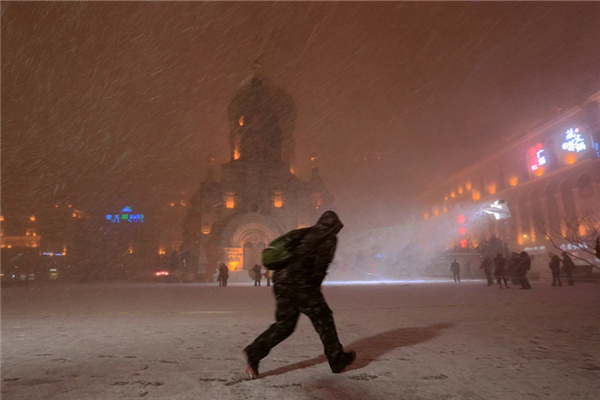

|
A customer examines bottled Tibet-made "5100" glacier mineral water at a supermarket in Beijing. Targeting the middle- and high-end market, the "5100" is sold between 6.5 and 9 yuan a bottle in Beijing's supermarkets, while most other domestic brands bear a price tag below 3 yuan. CFP |
Tibetans are developing a new industry by tapping their mineral water resources.
Tibet Glacier Mineral Water Co Ltd captures water from a spring in Dangxiong country, processes it at a facility near Lhasa, capital of Tibet autonomous region and transports it on the Qinghai-Tibet Railway to cities such as Beijing and Shanghai
The company began producing its 5100 Glacier Mineral Water, named after the spring's altitude in meters, in 2005. As early as in 1986, the Chinese Academy of Engineering discovered the spring in Dangxiong county, 170 km north of Lhasa, but was unable to distribute it widely in China until the railway, which opened in 2006, eased transportation logistics.
Tibet Glacier Mineral Water Co Ltd has two bottling lines, each with a capacity of 24,000 bottles per hour, but the output is far from enough to meet the huge market demand. The company will launch a new production line in April, with a capacity of 36,000 bottles per hour.
"Tibet has enough natural water to foster a competitive industry," said Qianba Puncog, chairman of the region's government.
Tibet has 448.2 billion cubic meters of surface water and 110.7 billion cubic meters of underground water.
But rapid growth of the local economy and an increasing population will pose a threat to the environment in five major river basins in Tibet, warned a recent Xinhua News Agency story. Water consumption is on a continuous rise in these areas, leading to environmental challenges, it said.
A May 2007 survey on Tibet's water resources found 17 heavy polluters had been caught and punished in the five river basins, which contain most of Tibet's agricultural and industrial activities.
Recently, the State Council, or China's Cabinet, passed in principal an ecological protection plan for Tibet over the next two decades.
Zhang Yongze, head of Tibet's environmental protection bureau, said the central government's plan reflected the importance and also vulnerability of the Tibetan ecosystem and was adopted as a preventative measure against ecological disasters.
Tibet has an urgent need for rapid economic development but that must go hand-in-hand with good protection of its environment, he said.
Tibet Glacier Mineral Water Co's bottled water retails for 6.5 and 9 yuan in Beijing's supermarkets, two or three times more than other mineral water brands.
The company employs 200 people and its 500-million-yuan bottling facility pumps out 300,000 tons of bottled water a year. It currently has two bottling lines, each able to produce 24,000 bottles an hour and will launch the new line in April, increasing capacity by over a third.
(China Daily 03/30/2009 page5)













